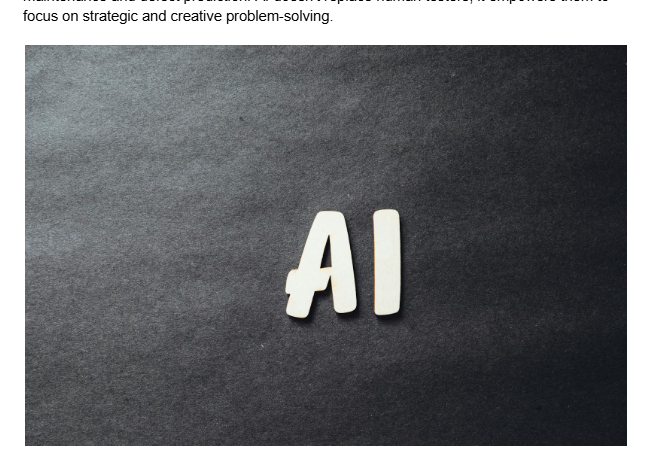
Optical character recognition is used for reading and transforming written text. Such information would involve writing or printing anything that can be changed by a computer, such as machine-encoded texts.
Image OCR belongs to image recognition and is often used on input data printed with cards or sheets. Things such as accounting reports, invoices, passports, folios, and calling cards act as input. The software uses optical character recognition (OCR) technology to derive textual information from a digitized or scanned document.
The article discusses how OCR was developed and how data is extracted with the use of OCR while providing some of the cases.
What is OCR?
Optical character recognition (OCR) is a technology that reads out text from printed or handwritten documents, separating individual alphanumeric characters. OCR is used for the image to text conversion, which means that the text can be read by machines and edited directly. This technology is able to transform an image into text by identifying letters and characters from an image. Humans can perceive the various letters, words, and phrases within a machine-readable page almost instantaneously, yet such machines cannot perceive these elements fast enough for people to decipher them immediately.
For instance, a scene or an image can be translated as a set of useless dots that can only differ in black or white colors and represent a certain page of printed text. The computer itself has no letters or words. They are external.
OCR tools transform characters so that a computer can read and comprehend text, including letters, symbols, words, and other types of text. this will allow the user to extract text from image or document files, ultimately converting their mountain of paper records into searchable and editable digital files, making them more accessible and manageable.
How does OCR technology work?
The optical character recognition technique consists of these three essential steps:
Image pre-processing
In order to improve the chances of successful recognition, OCR software typically pre-processes images. Picture preprocessing aims to improve the original image data. By doing this, undesirable visual distortions are lessened, and certain aspects of the image are highlighted. The following phases require these two procedures to be completed.
Character recognition
Real character recognition requires an understanding of "feature extraction." Just a select few attributes are picked when the amount of input data is too large to process. The features that have been chosen are assumed to be the most important, while the traits that have been judged unnecessary are ignored. Using the smaller data collection instead of the first large one improves performance.
OCR post-processing
Post-processing is another method for error correction that helps OCR achieve such high accuracy. You can limit the output and improve the precision by using a lexicon. The algorithm can therefore fall back on a list of terms that are allowed to appear on the scanned page, for example.
OCR can read numbers and codes in addition to recognizing the proper words. This is useful for spotting lengthy strings of numbers and letters, like the serial numbers used in numerous industries.
The Processes of Intelligent Data Extraction using OCR
The typical OCR data capture workflow includes data extraction as well as OCR. It is frequently referred to as the process of converting a document into usable, live data. The stages of this process are as follows:
Recognizing metadata
It can be difficult to select the right data to extract if the source system is not well-documented. You can import it using automatic metadata management, which is the initial action in resolving the problem. You can produce an extraction strategy independent of the transaction processing software.
Pre-processing of documents
The quality of the scanned image is the key concern at this point. Here, the OCR engine looks for and fixes errors automatically.
Classification of documents
Identifying the scanned document's format (such as JPG, PNG, PDF, TIFF, etc.) and structure (organized, semi-structured, or unstructured) is now crucial.
Character Recognition
Now, break the document up into sections, subsections, tables, or zones. The vital characters or identifiers can then be located after they have been separated.
Validation of data
It is possible to improve the accuracy of data extraction and spot any issues that need to be rectified by locating faults in the extracted data.
ML with a human in the loop
The most accurate data extraction model should be checked on all papers that have been highlighted. The software exports the extracted and cleaned data in a variety of formats or sends it to the OCR database. Documents may be converted into JSON, XML, PDF, and other formats using IDP procedures.
Organizations rely largely on OCR and data extraction. because it provides them with a way to access data stored in various ways. Companies can take this data and use it for a variety of things, including marketing, research, and decision-making.
Additionally, data extraction automates their fundamental business registration services, increasing productivity and enabling better decision-making. You can select OCR data extraction software for automatic extraction.
The Best Data Extraction Examples
Data extraction occurs in a variety of situations. OCR data extraction from databases, data extraction from web pages, and data extraction from papers are a few common examples.
Database management
Data from several sources is kept in a database type called data warehousing. Because they allow businesses to gather data from various sources and store it in one place, data warehouses play a crucial role. Data sharing with other applications is thereby made simpler
Web scraping
A technique for gathering information from websites and other data sources. Through this procedure, pricing, product, and contact information can be gathered. One of the most effective methods you can use in your business to adopt a data-driven approach is by utilizing the best data extraction software to extract data. or businesses looking to scale their data collection efforts, an automated web scraper like the one offered by Tool Automation.ai can streamline the process. This tool not only ensures accuracy and efficiency but also adapts to dynamic website structures, making it a reliable solution for extracting large volumes of data while maintaining compliance with web scraping best practices and for Access visit site.
Data mining
As part of data mining, significant information is extracted from huge databases. Data mining is an important activity since it enables businesses to make better decisions. Their interactions with the clients are elevated as a result.
Final Verdict
Data extraction has been transformed by OCR technology, which makes it simple, effective, and accurate. It has applications across a number of industries, and its significance for SEO cannot be overstated. We may look forward to a time when data extraction and SEO work hand in hand as OCR technology develops further.



